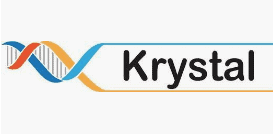
Krystal Biotech has reported positive results from a mid-stage trial of its gene therapy for a life-threatening rare skin disease, and hopes to start a phase 3 study before year-end.
The phase 1/2 trial of KB103 was carried out in patients with severe generalised recessive dystrophic epidermolysis bullosa (RDEB), an incurable and sometimes fatal skin blistering condition caused by a lack of collagen that renders the skin very fragile.
KB103 (bercolagene telserpavec) is designed to deliver working copies of the gene (COL7A1) that is missing in RDEB patients, restoring normal collagen production in skin cells, and unusually for a gene therapy is administered as a topical formulation.
In the trial, called GEM-1, five out of six RDEB wounds treated with KB103 – two chronic (non-closing) and four recurrent – were completely closed during the course of the trial, with the average time to wound closure just over three weeks (23 days).
Apart from one chronic wound, the treated wounds remained closed at 90 days after treatment, and in a couple of patients recruited earliest into the trial lesions have remained trouble-free for more than six months.
It’s hard to overstate the importance of that clinically for patients with RDEB, the most severe form of the disease, who tend to have wounds so deep in the skin they are likened to third-degree burns in terms of how painful they are.
Moreover, repeated wounds and scarring can lead to the development of aggressive skin cancers, not uncommonly emerging in teenage years and dramatically shortening life.
Encouragingly, Krystal’s data is the second piece of encouraging news for RDEB patients and their families and carers in a few weeks, raising the hope that high-tech therapies could at last provide some form of treatment.
Abeona Therapeutics reported recently that its cell therapy candidate EB-101, based on patients’ own skin-cell modified with the COL7A1 gene, induced sustained wound healing lasting for three years or more.
The modified skin cells are cultured to form sheets that are transplanted onto the patient with the aim of treating wounds and blisters.
At the moment, the care of RDEB patients is limited to head-to-foot bandaging and daily checking for new blisters, a process that can take hours. Blisters need to be pricked with a needle to stop them growing, according to medical charity Cure EB.
Pittsburgh-based Krystal says that on the strength of the data it has been granted a Regenerative Medicine Advanced Therapy (RMAT) designation from the FDA, which should speed up the development and regulatory review of KB103 in the US. It is also in the EMA’s PRIME programme, which has a similar objective.
“New treatments for patients suffering from EB are desperately needed, especially one that provides a convenient, painless way to administer treatment for patients suffering with this debilitating disease and to reduce their travel burden,” said dermatologist Peter Marinkovich of Stanford University, the principal investigator in the GEM study.
“These exciting data in the phase 1/2 trials are supportive of this very promising new approach for treating this debilitating disease.”




